History
On August 23, 2016, Indiana University welcomed its inaugural group of engineering students. The 25 undergraduate and 20 PhD students joined IU’s intelligent systems engineering program, which is focused on the development of small scale, networked and mobile technology. This marked a turning point for IU as it launched the first engineering program in its history. In February, 2018, the Emerging Areas of Research (EAR) program, created as part of the Bicentennial Strategic Plan for IU Bloomington, selected for awards two of the 21 proposals submitted for that year’s competition and representing nearly 250 faculty at IU Bloomington. One of them was the “Center for Quantum Information Science and Engineering” initiative led by Gerardo Ortiz, along with David Baxter, Alexander Gumennik (Engineering), Roger Pynn, Phil Richerme, Amr Sabry (Computer Science), Mike Snow and Shixiong Zang among others. In addition to the grant from the EAR program in 2018 the center has received additional external funding (from NSF and DoE) and in January 2020 the center was rededicated. The new center will develop technologies and materials made possible by the ‘second quantum revolution’ while also offering several educational opportunities for IU students, including new undergraduate courses and possibly one of the country’s first quantum engineering programs.
Two months earlier, in October 2019, IU’s quantum expertise had been on display at Indiana National Lab Day held in Indianapolis. The event connected IU, IUPUI, the University of Notre Dame and Purdue University researchers with representatives from ten US National Laboratories to highlight unique research capabilities and opportunities as well as potential federal research collaborations. Though NSF had only recently established a foundation for the Big Ideas challenge through pioneering research and pilot activities (which includes the Quantum Leap challenge) Indiana has long had a standing commitment to innovation. Indiana University is still the home of mathematician Michael Larsen who in 2002 with co-authors Zhenghan Wang (at IU at the time), Alexei Kitaev (in Moscow then, now at Caltech and Microsoft) and Michael Freedman (at Microsoft Q Station in Santa Barbara) first introduced the world to topological quantum computation. In 2009 Zhenghan Wang (by now also at Microsoft and UC Santa Barbara) returned for a summer to host with logicians Michael Dunn and Larry Moss an international workshop on Quantum Logic Inspired by Quantum Computation.
Over the last 20 years Indiana University students have had the opportunity to take graduate seminars and classes in Quantum Information Science and Quantum Computation, mainly through the efforts of Amr Sabry (Computer Science) and Gerardo Ortiz (Physics). Recently, however, recognizing the national imperative of solving the talent shortage in the quantum computing industry the Indiana University QSEc, led by Mike Snow, has been working on establishing a unique educational opportunity, in Indiana and anywhere else in the nation, by setting the foundations of an intensive one-year, multi-disciplinary MS degree with tracks which thread as needed through physics, chemistry, mathematics, computer science, engineering, and business to bridge students with a broad distribution of previous training into QIS-related opportunities. There is no MS degree program in the US of this type, but the need for a program which does not assume previous BS-level training in physics is clear. Indiana University was also the catalyst for the first (and so far the only) ever symposium event at SIGCSE earlier this year (March 11, 2020, in Portland, Oregon) dedicated to quantum programming for undergraduates. This and other initiatives have accelerated collaboration with other higher-education institutions in Indiana (most notably Purdue, Notre Dame, IUPUI, but also with Rose-Hulman and others). As an example, at the exact same time with the SIGCSE 2020 symposium in Portland, IU QSEc researchers were hosting in Bloomington their colleagues from Purdue QSEI for a mini-symposium.
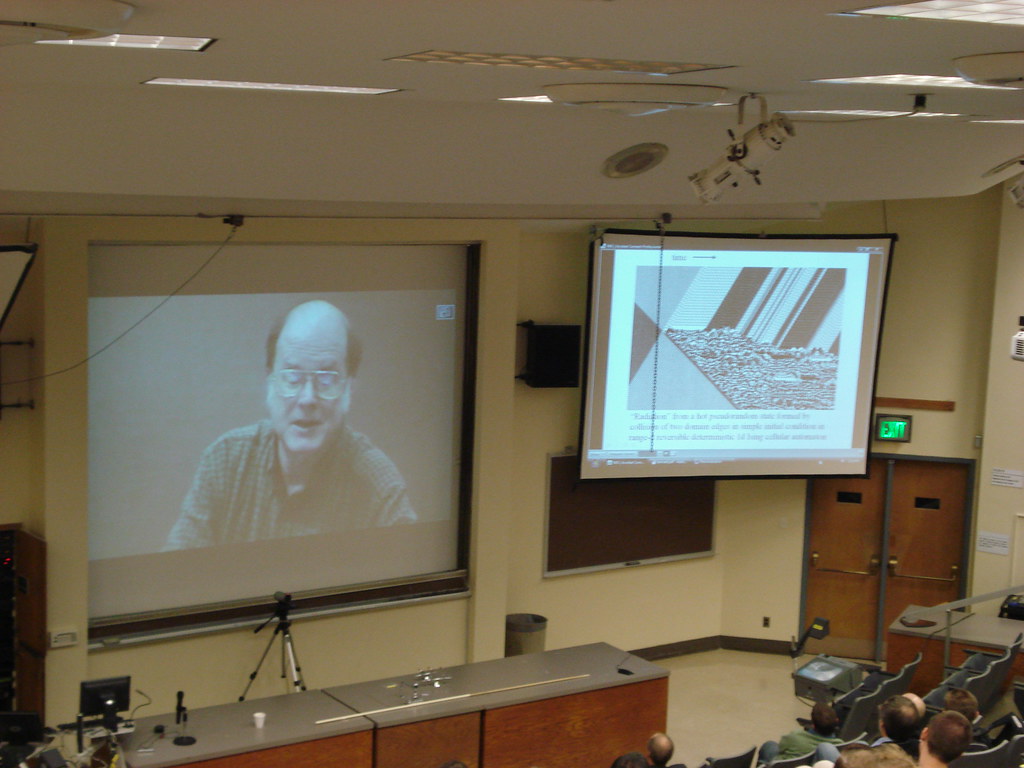 Fri Oct 31, 2008, Swain East 119 @4:30-5:45pm: Charles H Bennett delivers his talk, remotely, from the IBM Thomas J Watson Center. The title of the talk was: A Quantum Computational View of the Origin of Randomness, Classicality and Complexity in the World. |
||
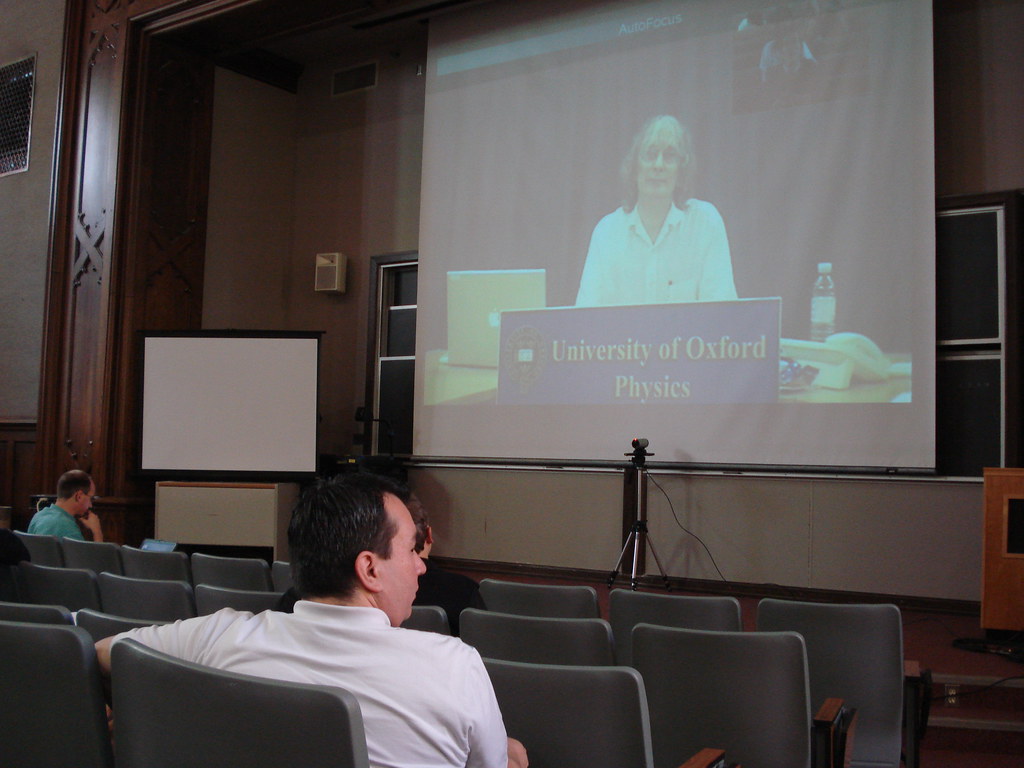 Sat Nov 1, 2008, Rawles 100 @2:00-2:45pm: David Deutsch delivers his talk, remotely, from Oxford University’s Clarendon Laboratory. The title of his talk eventually became the theme of the conference: What is Computation? (How) Does Nature Compute? |
||
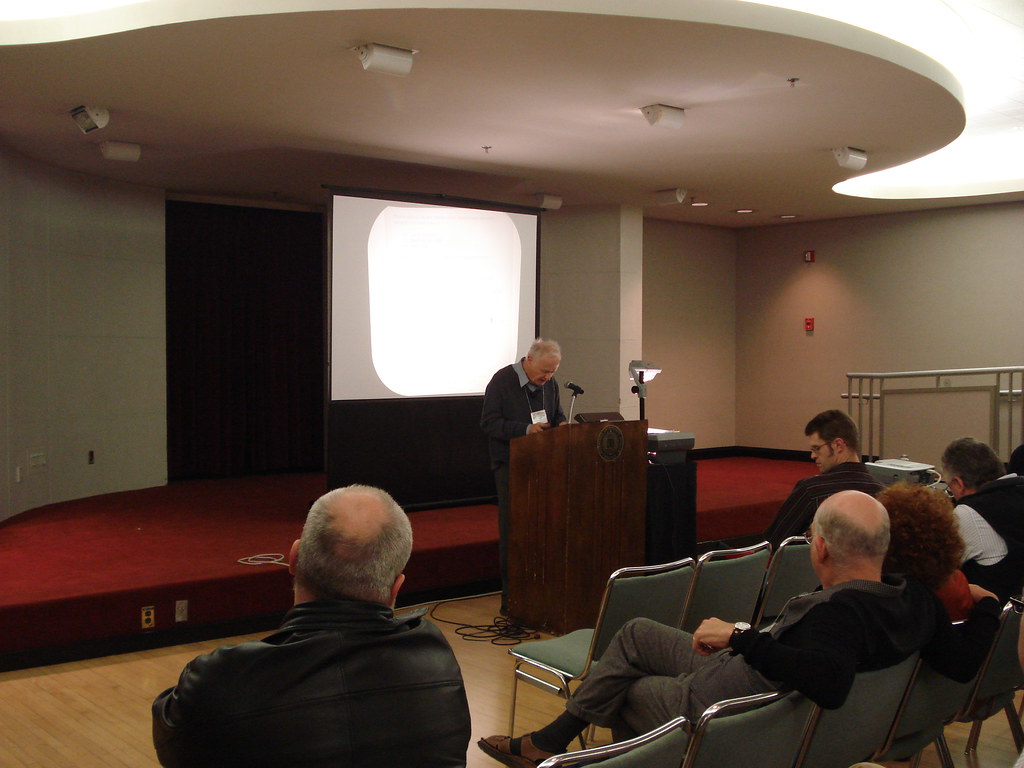 Sat Nov 1, 2008, Frangipani (IMU) @11:30am-12:30pm: Sir Anthony J Leggett delivers, in person, his talk entitled: What Exactly is the Predictive Success of Quantum Mechanics (to Date) Telling Us About the Phisical World? (Second from left, 2nd row: Gregory J Chaitin). |
||
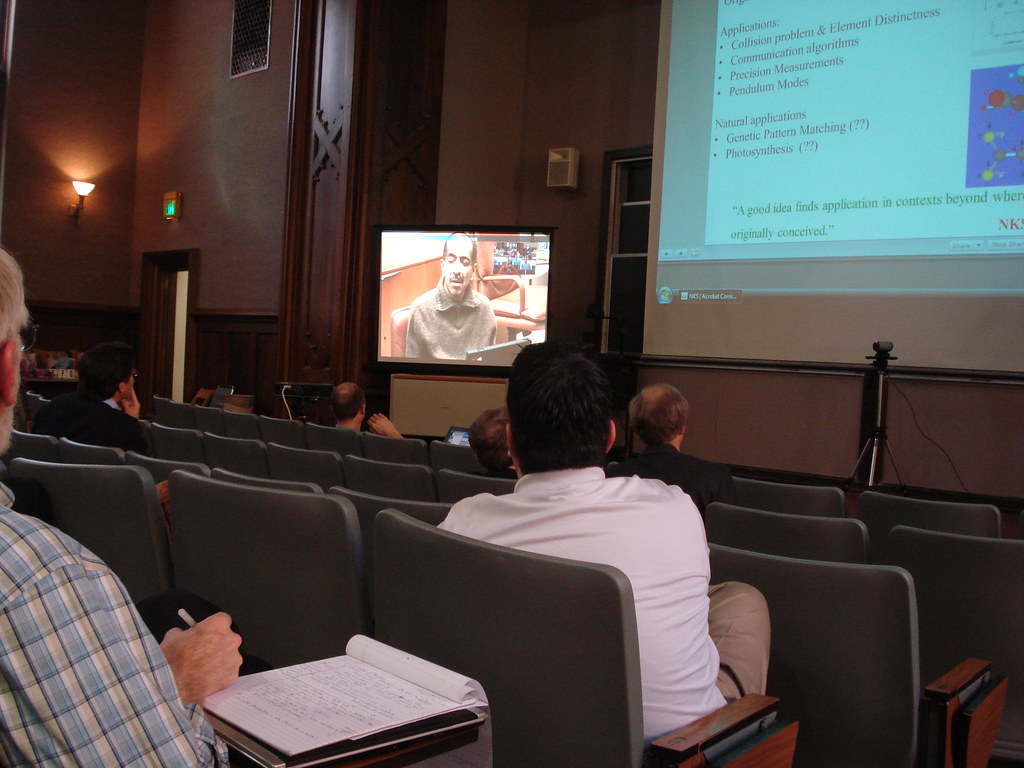 Sat Nov 1, 2008, Rawles 100 @3:00-3:45pm: Lov K Grover delivers, remotely, from Bell Labs, his talk entitled: Can Quantum Search Take Place in Nature? From left to right in this picture: Andy Hanson (taking notes), Gerardo Ortiz (third row) and Hector Zenil (white shirt). |
||
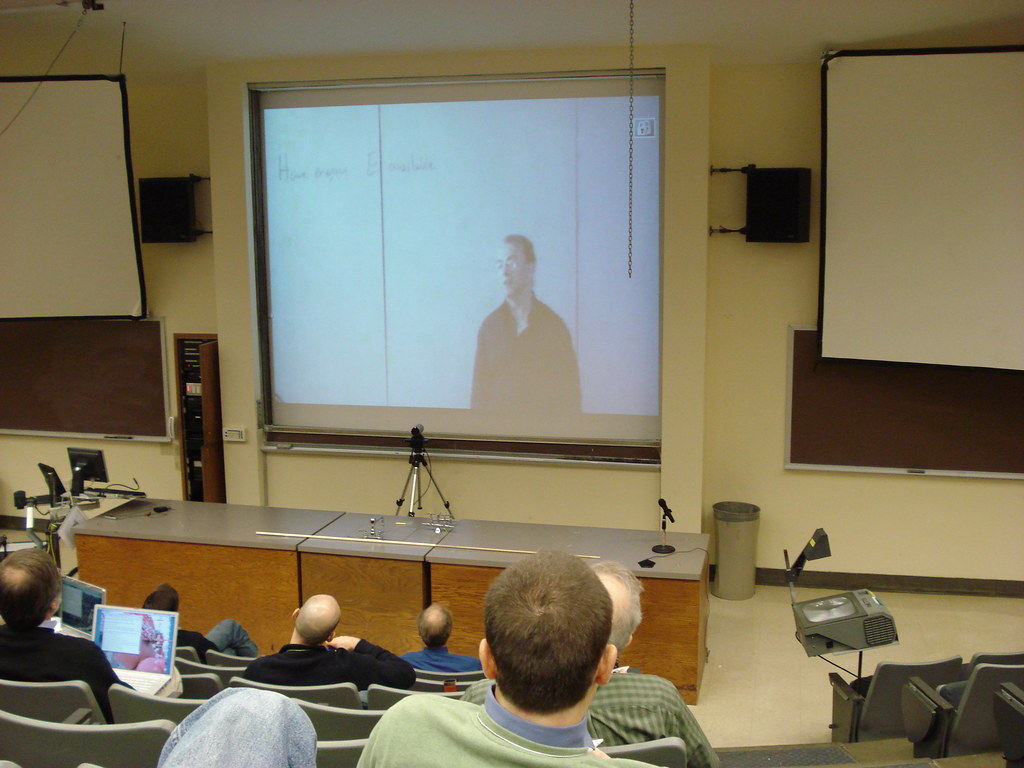 Fri Oct 31, 2008, Swain East 119 @2:45-4:00pm: Seth Lloyd delivers his talk, remotely, from MIT. The title of the talk was: The Computational Capacity of the Universe (cf. his recent book, at the time, Programming the Universe, A Quantum Computer Scientist Takes on the Cosmos). |
||
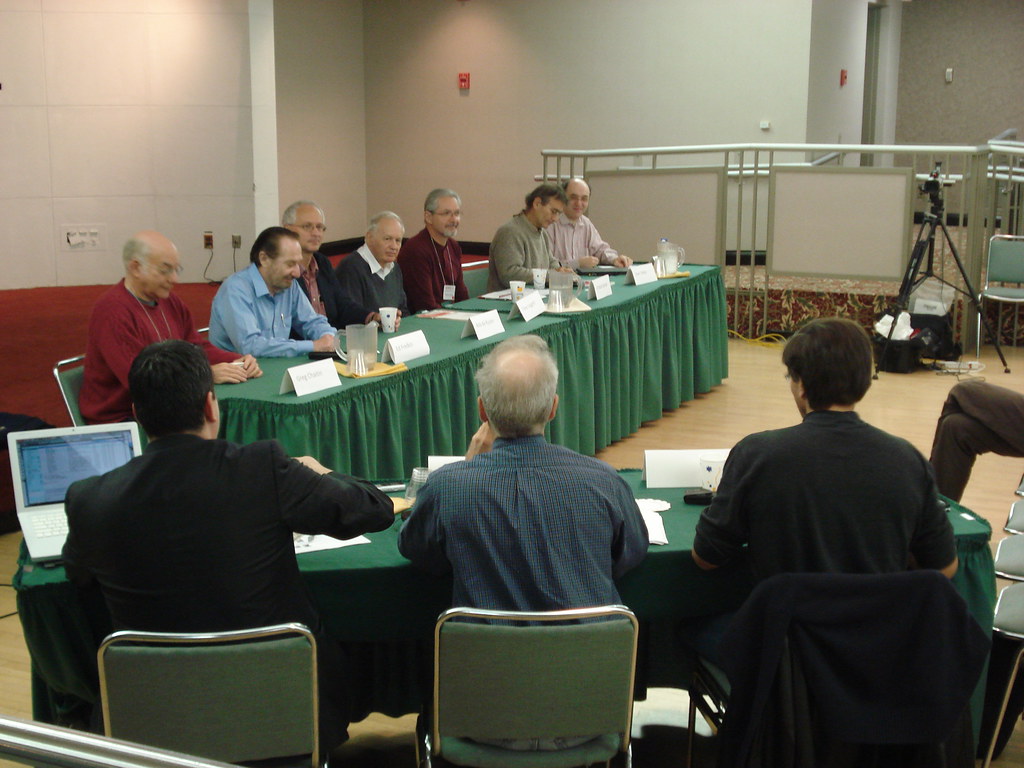 Sun Nov 2, 2008, Frangipani Room (Indiana Memorial Union) @9:00-10:30am and 10:45am-12:15pm: round-table discussion with (from left to right) Greg Chaitin, Ed Fredkin, Rob de Ruyter van Steveninck, Tony Leggett, Cristian Calude, Tom Toffoli (of Toffoli gate fame) and Stephen Wolfram, moderated by (from left to right, with their backs towards the camera) Hector Zenil, George Johnson and Gerardo Ortiz. |
||
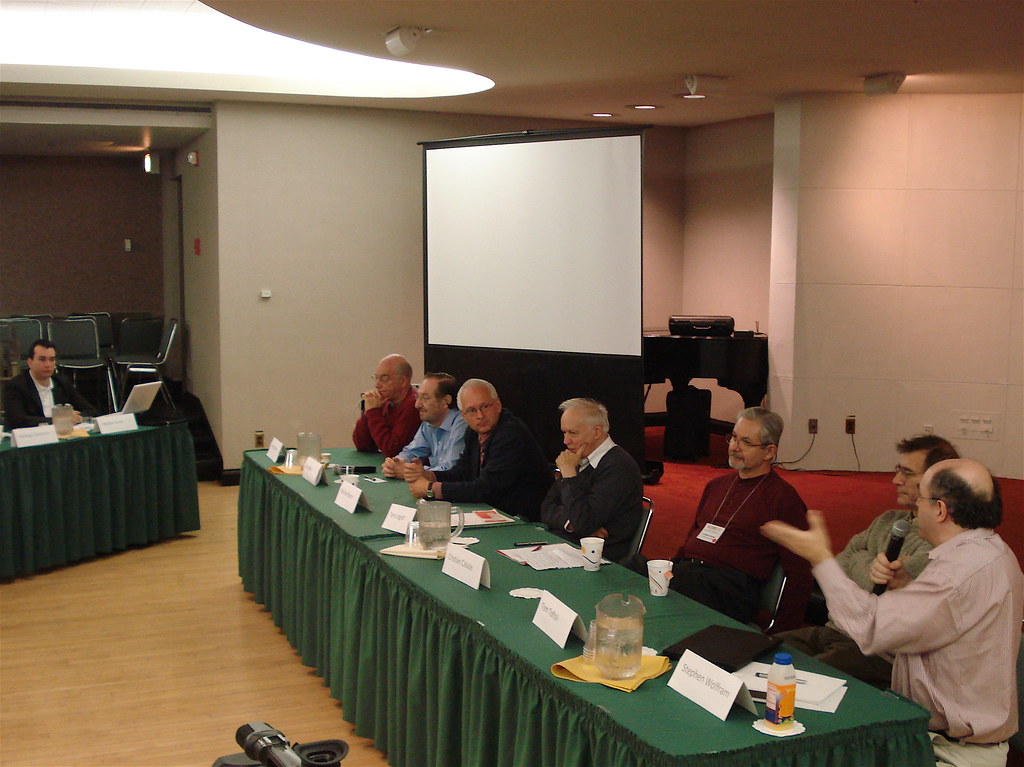 The round table from the other side of the room. See books listed below for transcripts of all these talks. |
||
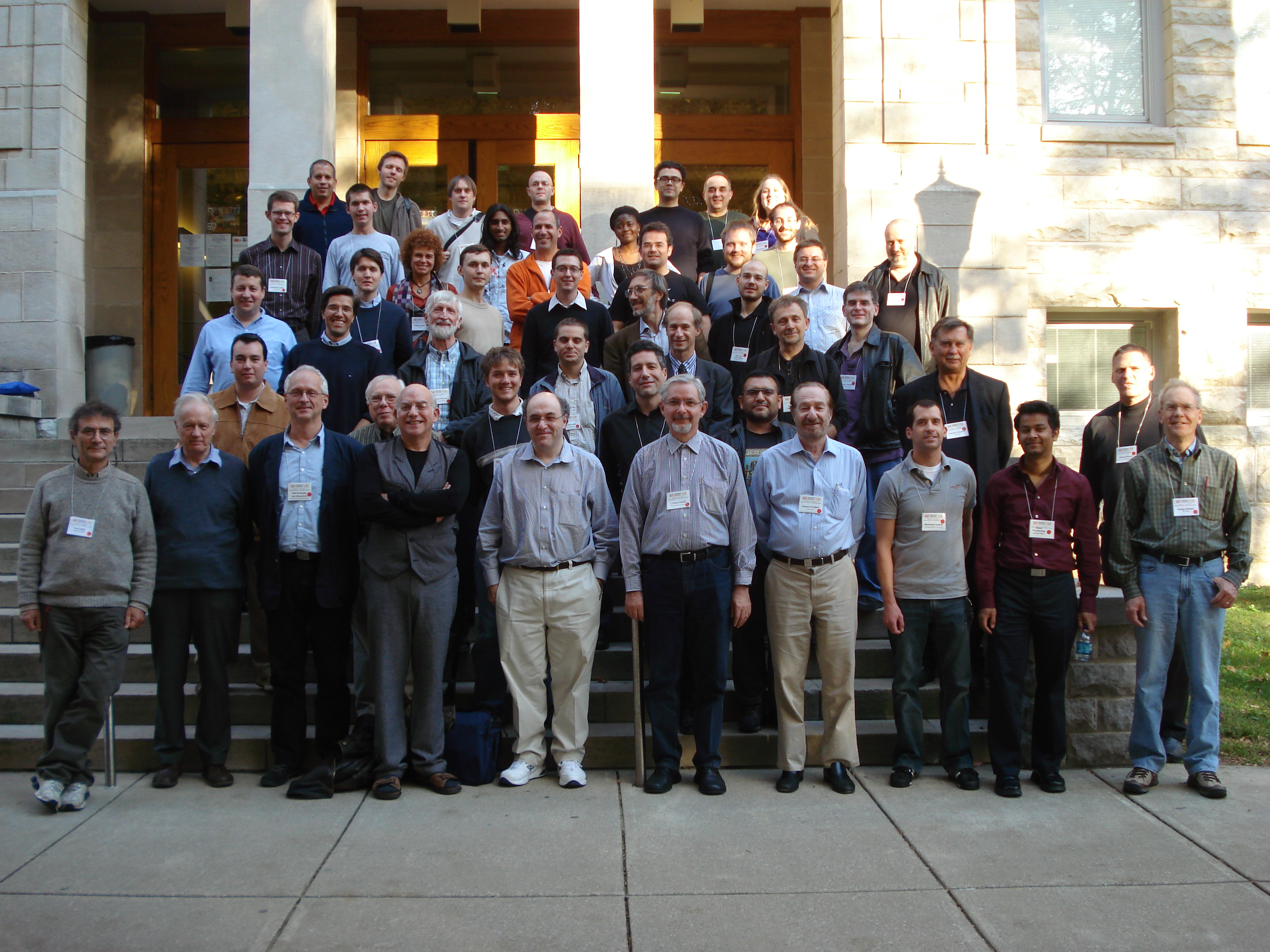 Sat Nov 1, 2008, on the steps of Lindley Hall around 4:15pm. Front row, left to right: Tom Toffoli, Tony Leggett, Rob de Ruyter, Greg Chaitin, Stephen Wolfram, Cris Calude, Ed Fredkin and (last, on the right) George Johnson. Hector Zenil and Gerardo Ortiz are visible in the second row on the left. Mike Dunn is visible between Rob de Ruyter and Greg Chaitin and right above him (next to Gerardo) is Andy Hanson. |
||
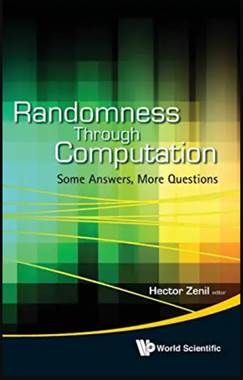 |
These two books contain most of the talks from the 2008 and 2005 conferences. “Randomness Through Computation (Some Answers, More Questions)” was published first, on Feb 11, 2011. The second one, “A Computable Universe (Understanding and Exploring Nature as Computation)” followed on Oct 30, 2012, and contains a foreword written by Sir Roger Penrose (who wanted but wasn’t able to attend our 2008 conference neither in person nor via remote video due to a prior engagement; Prof. Penrose had in fact visited Bloomington just a few months earlier to present the Joseph and Sophia Konopinski Memorial Public Lecture in Physics (and a separate lecture on Twistor Theory) at Tim Londergan’s invite). The 2005 conference also featured Ray J Solomonoff, one of the founders (with Greg Chaitin and Andrey Kolmogorov) of Algorithmic Information Theory.
|
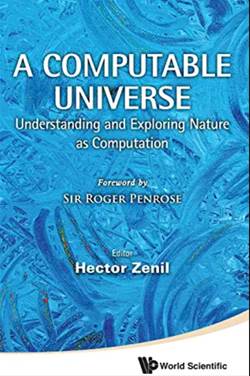 |

